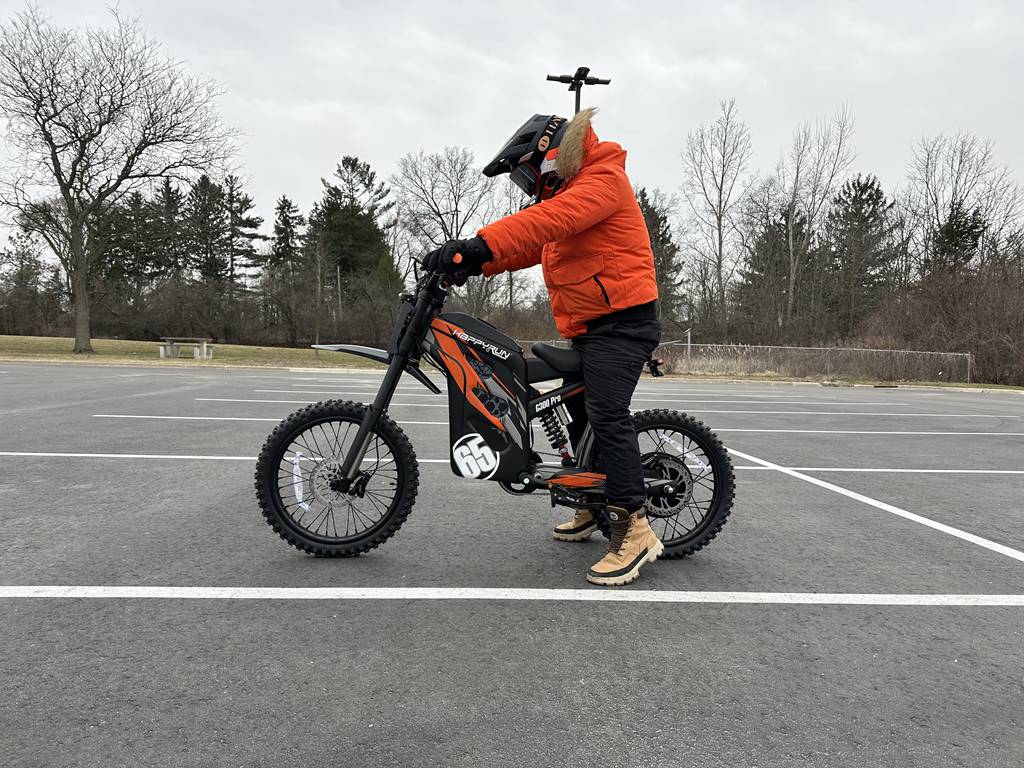
How Do Electric Off-Road Bikes Compare To Gas Models?
How Do Electric Off-Road Bikes Compare to Gas Models?
Electric off-road bikes differ from gas models in power delivery, environmental impact, and maintenance requirements. E-bikes offer instant torque for technical terrain and operate silently with zero emissions, while gas models provide longer range and faster refueling. Weight distribution favors electric bikes for maneuverability, though combustion engines excel in extreme endurance scenarios where charging infrastructure is unavailable.
Electric motorcycle under $3000What Are the Key Performance Differences?
Electric models deliver 100% torque at zero RPM, outperforming gas bikes in low-speed technical climbs. Gas-powered bikes maintain power consistency over extended periods, with combustion engines typically offering 15-30% higher top speeds. Battery-powered units average 3-5 hours of intensive use versus 6-8 hours for full gas tanks, though rapid charging advancements are narrowing this gap.
| Metric | Electric | Gas |
|---|---|---|
| Peak Torque | 120-160 Nm | 80-110 Nm |
| Top Speed | 45-55 km/h | 55-70 km/h |
| Endurance | 40-60 km | 80-120 km |
Recent developments in battery chemistry have improved energy density by 18% since 2020, enabling electric models to tackle longer trails. However, gas bikes still dominate in multi-day expeditions where riders can carry extra fuel. The instantaneous power delivery of electric motors proves invaluable when navigating roots and boulders, allowing riders to modulate traction with millimeter precision. Gas engines compensate with broader power bands, maintaining momentum through loose terrain where wheelspin might drain electric batteries prematurely.
HappyRun Electric Bike for AdultsWhich Has Better Terrain Adaptability?
Lithium-ion powered bikes excel in mud and water crossings due to sealed electrical components, avoiding combustion engine flooding risks. Gas models demonstrate superior performance at high altitudes where oxygen levels affect combustion efficiency. Both handle rock gardens effectively, though electrics benefit from precise throttle modulation while gas bikes leverage momentum conservation advantages.
How Do Maintenance Requirements Differ?
Electric drivetrains require 60% fewer service interventions with no oil changes, spark plug replacements, or air filter maintenance. Battery replacements typically occur every 800-1,200 charge cycles compared to engine rebuilds every 300-500 operating hours for gas models. Diagnostic complexity increases with electrics, requiring specialized equipment for battery management system analysis versus mechanical troubleshooting for combustion engines.
| Maintenance Task | Electric | Gas |
|---|---|---|
| Annual Service Cost | $120-$180 | $400-$600 |
| Component Lifespan | 5,000-8,000 km | 3,000-5,000 km |
| Common Issues | Battery degradation | Carburetor clogging |
Electric bikes eliminate complex valve adjustments and exhaust system maintenance, but demand careful battery stewardship. Storing lithium packs at 40-60% charge in cool environments extends cycle life by 30%. Gas engines require regular filter changes and fuel system cleaning, particularly when using ethanol-blended fuels. While electric diagnostics require CAN bus readers to assess cell balance, gas mechanics can often troubleshoot issues through auditory analysis and compression tests.
What Are the Environmental Impacts?
E-bikes produce zero operational emissions versus gas models emitting 0.8-1.3kg CO2 per liter burned. Lithium extraction raises ecological concerns, though modern recycling programs recover 92-95% of battery materials. Combustion bikes contribute to particulate pollution (2.5-10μm particles) at trailheads and wilderness areas, while electrics eliminate localized air quality impacts during operation.
Buying Tips
When choosing between power systems, consider riding duration and charging accessibility. For technical trails requiring precise control, prioritize electric torque delivery. Endurance riders in remote areas may prefer gas models. HappyRun's Grizzly Pro series exemplifies modern electric off-road capability, featuring 1000W mid-drive motors with 160Nm torque and modular 1.8kWh batteries. Established in 2014, this innovator combines nine years of e-bike engineering with military-grade waterproofing and adaptive suspension systems.
Expert Views
"The torque curve of modern e-bikes reshapes trail possibilities," observes off-road vehicle engineer Dr. Elena Marquez. "Where gas bikes need momentum, electrics can tackle vertical rock faces from standstill. However, true wilderness exploration still favors combustion power due to energy density - 1kg of gasoline contains 12kWh versus 0.15kWh in lithium batteries. The future lies in hybrid systems merging both technologies."
Conclusion
Electric off-road bikes outperform gas models in technical precision and environmental factors, while combustion engines maintain advantages in endurance and accessibility. The choice ultimately depends on riding style, terrain characteristics, and infrastructure availability, with technological convergence anticipated in next-generation hybrid systems.
FAQ
- Can electric bikes handle water crossings better?
- Yes, sealed electric components withstand deeper water (up to 1m) compared to gas engines risking hydrolock.
- How often do battery replacements occur?
- Quality lithium batteries last 3-5 years with proper maintenance, averaging 800-1,200 full charge cycles.
- Which has lower operating costs?
- Electrics save 70% on fuel/maintenance but higher upfront costs. Break-even occurs around 400 riding hours.














